Welcome
We are back into Germany this week, traveling at great speed down the autobahn to the southwest of Germany to Stuttgart.
We have been to Stuttgart before but this time was special because we caught up with friends who live two hours further south.
We had only met the male half of this couple before in person, but have had many online discussions with these two who we have worked with over a number of years.
We had such fun.
Although there are many highlights that the boys enjoyed at the Mercedes and Porsche Museums, it was the Steakhouse we went to on our last evening that was probably the best meal we had the whole time we were away. But more on that later in this edition.
A reminder that this is the last week to get a lifetime discount if you upgrade to pay so that you can read all future editions in full. Links at the end of the newsletter.
For now, I hope you enjoy Traveling Through History with me this week.
Michelle
Savvy Travel Historian
European Vacation
Stuttgart, Germany

Background
Known as the ‘Cradle of the Automobile’, Stuttgart, the home of the Mercedes and Porsche Museums, was first mentioned by the Romans and has played a strong role in German history over the centuries.
Located on the Neckar River, Stuttgart is in the South-West of Germany and about an hour's drive from the Black Forest.

History
Stuttgart, the capital city of the state of Baden-Württemberg in southwestern Germany, boasts a rich and varied history that dates back over a thousand years.
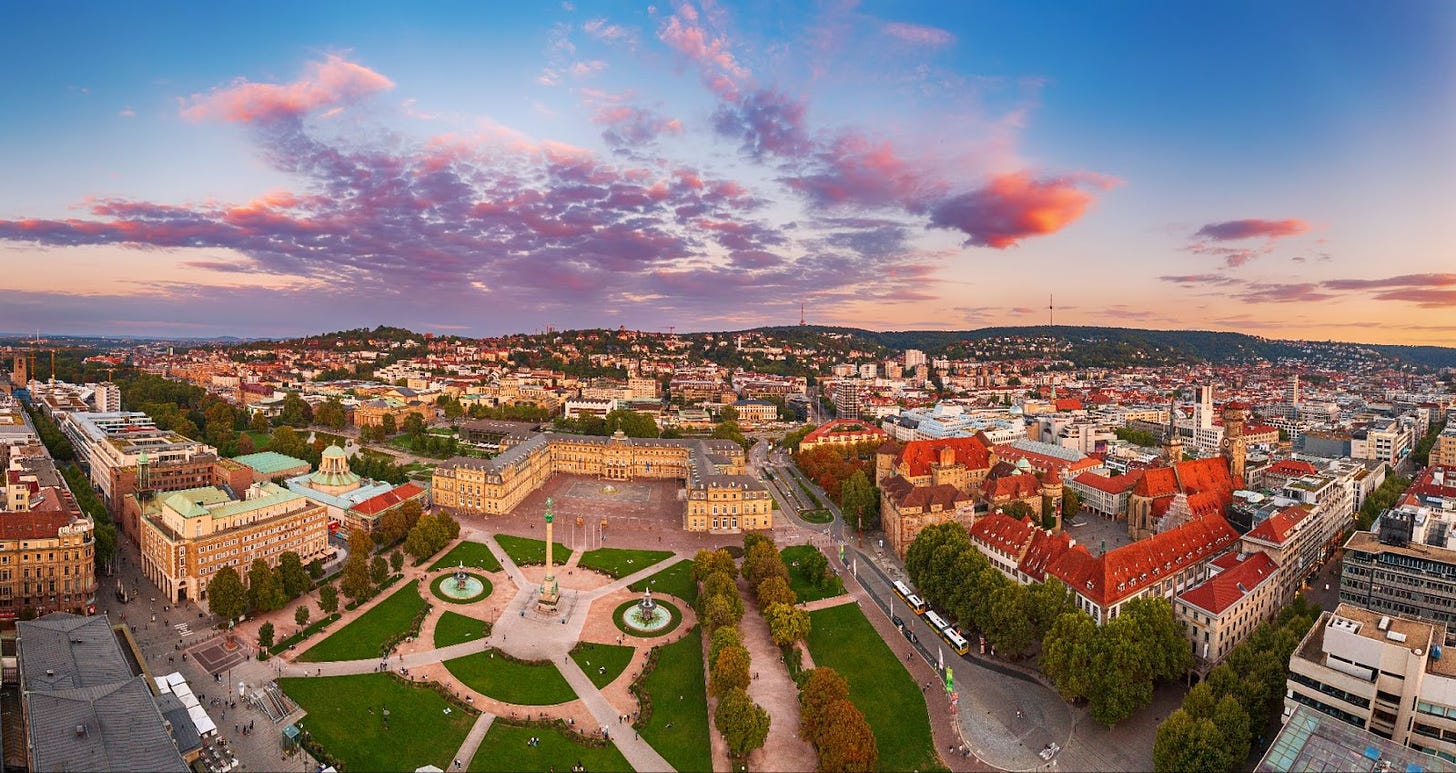
Originally established as a Roman military camp called a ‘castra’ in a location now known as Bad Cannstatt in 90 AD, the area was known for its Roman villas and vineyards blanketing the valley. It was on the main road from Mainz to Ausberg and was part of the Roman imperial province Germania Superior.
It is believed that Seelberg mammoth hunters from the late glacial period were the first occupants of the area.
Cannstatt is mentioned in the Abbey of St Gall’s archives from around 708 and by 950 AD the son of the Holy Roman Emperor Otto I (Duke Liudolf of Swabia), established a stud farm here.
This strategic location, nestled in a fertile valley known as the ‘Stuttgart Cauldron’ and surrounded by vineyards, quickly evolved into a thriving community.
Throughout the Middle Ages, Stuttgart rose in prominence under the Counts of Württemberg, who established it as their seat of power in the 13thC. This period saw significant growth and development, as Stuttgart became a center of political authority, culture, and economy in the region.

At the heart of the city are a number of historical squares and buildings that should be seen and visited.

Stuttgart’s influence continued to expand during the Renaissance and early modern periods, which was marked by the construction of notable buildings such as the Old Castle.

It is the oldest building in Stuttgart and is now a museum complex for the State of Württemberg. You can find information on visiting here.
Located just outside the entry to the Old Castle is Schillerplatz, dedicated to the German poet, philosopher, historian and dramatist, Frederick Schiller.

In 1839, a memorial to Schiller was erected here and it remains today.

Located nearby and just a short walk away from this area is the ‘New Palace’ which was constructed in the 18thC in a Baroque style and is one of the largest in southern Germany.

The Königsbau, located at the opposite end of Schlossplatz, was built between 1856 and 1860 by King Wilhelm I and now forms part of the main railway station, along with shops and cafes.

The building was significantly damaged in WWII but was rebuilt between 1958-59.
In the 19thC the city became an important site for cultural and intellectual movements, particularly during the Weimar Republic, when it was recognised for its contributions to modern architecture and design.
In the 20thC, Stuttgart faced significant challenges, including extensive damage during World War II. However, the post-war period was marked by rapid reconstruction and modernisation, leading to economic prosperity and a resurgence in cultural life.
Today, Stuttgart is known worldwide for its automotive industry, being the home of Mercedes-Benz and Porsche, and continues to be a leading centre for high-tech industry, research, and education in Germany.
Bad Cannstatt

Bad Cannstatt (the location of the Roman Castra) is now a suburb of modern day Stuttgart, and is renowned for its mineral springs.
A wellness centre, the ‘MineralBad Cannstatt’ is a collection of pools and exercise and wellness rooms.
When we visited in 2016, we spent a fun afternoon, swimming in the pool and doing the exercise classes (held on the hour every hour) and using the whirlpools.
If you have time, it’s well worth a visit.
Kursaal

The spa park, located behind the mineral baths, has been welcoming European visitors since the 19thC.
Established by King William I of Württemberg, Europeans and Americans came to bathe in the healing properties of the waters located here.
A ‘spa’ culture emerged from this and today the buildings are part of a popular event venue and restaurant.
The gardens can be used by the guests of the spa next door.
https://www.kursaal-cannstatt.de/home/
Famous residents in Bad Cannstatt include Gottlieb Daimler, who invented the first automobile and part-founder of the car group Daimler-Benz (now Mercedes-Benz), who died in Cannstatt in 1900 at the age of 65.
Mercedes-Benz Museum

The Mercedes-Benz Museum is one of Stuttgart’s top attractions. The double helix interior and the height of the building allows the exhibition space to be 16,500 sqm, even though the footprint is just 4,800 sqm.
Almost one million visitors a year can take two distinct ‘tours’ of the complex. The ‘Legend Rooms’ and the ‘Collections’, offer the ability to see only part of the museum but can also be merged for the full experience.

As you would expect from a top rated German tourist attraction, it is all very neat and organised and the sequential tour, through the history of the Mercedes - Daimler - Benz cars is impressive.
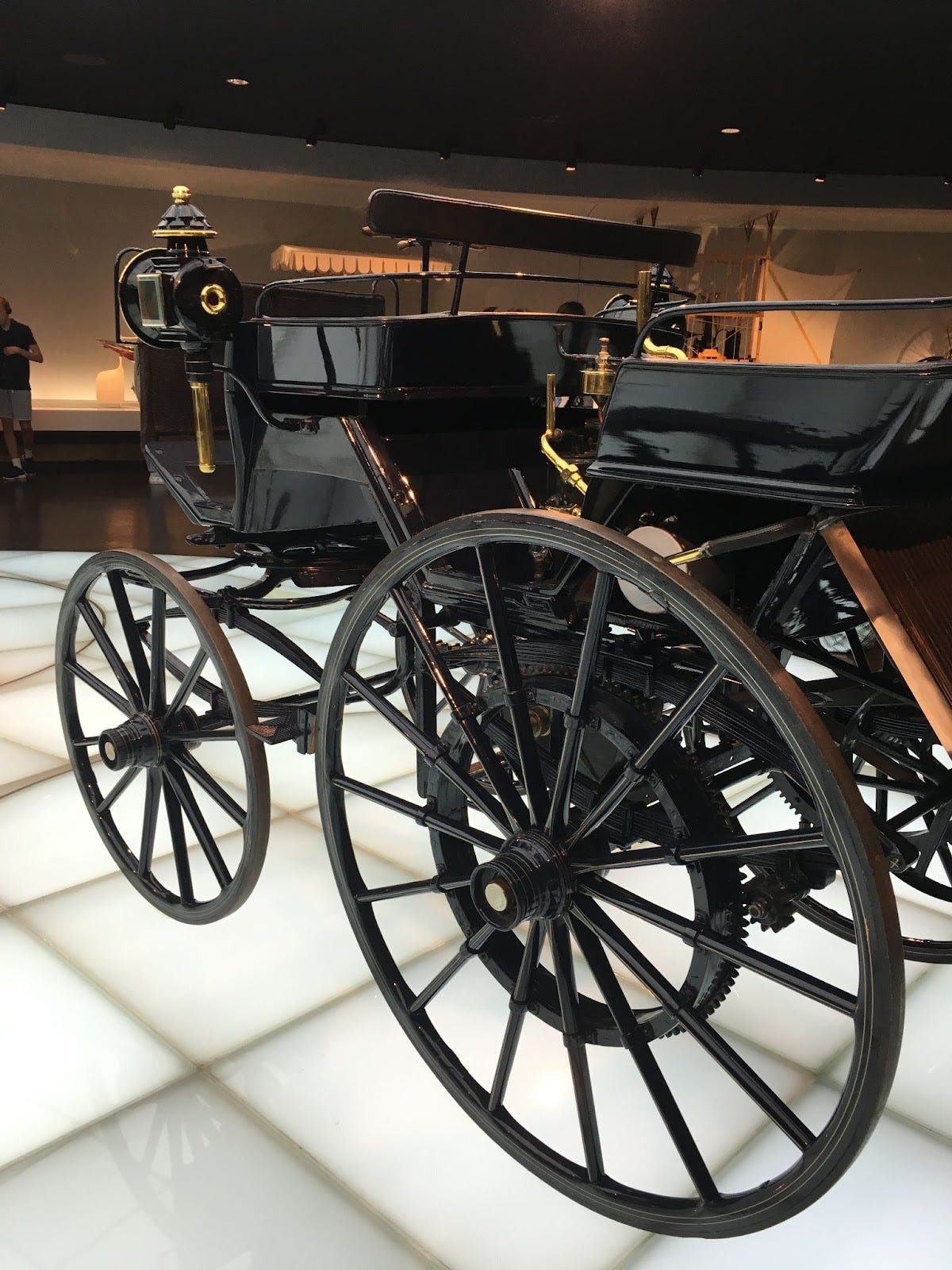
Tracing the journey of Carl Benz, right the way back to 1886 and starting from the first carriages built, right up to the cars used for the F1 Team, the museum is a terrific walk through automobile time, and interesting regardless of if you are a car lover or not.

Over 1500 exhibits and 160 vehicles are on display, over the nine levels of the exhibition space.
Classic Mercedes vehicles, driven by celebrities and other famous individuals are also on display, including the burgundy 500 SL car driven by Diana, Princess of Wales in 1991.

Also on display is Nico Rosberg’s driving kit from his Formula One victory in 2012, where from pole position he won the race, in the first of what would become known as the Silver Arrows of the ‘new era’ (silver painted cars with the green Petronas livery).

A number of legendary ‘silver arrows’ are also on display.

Relevant Travel Information:
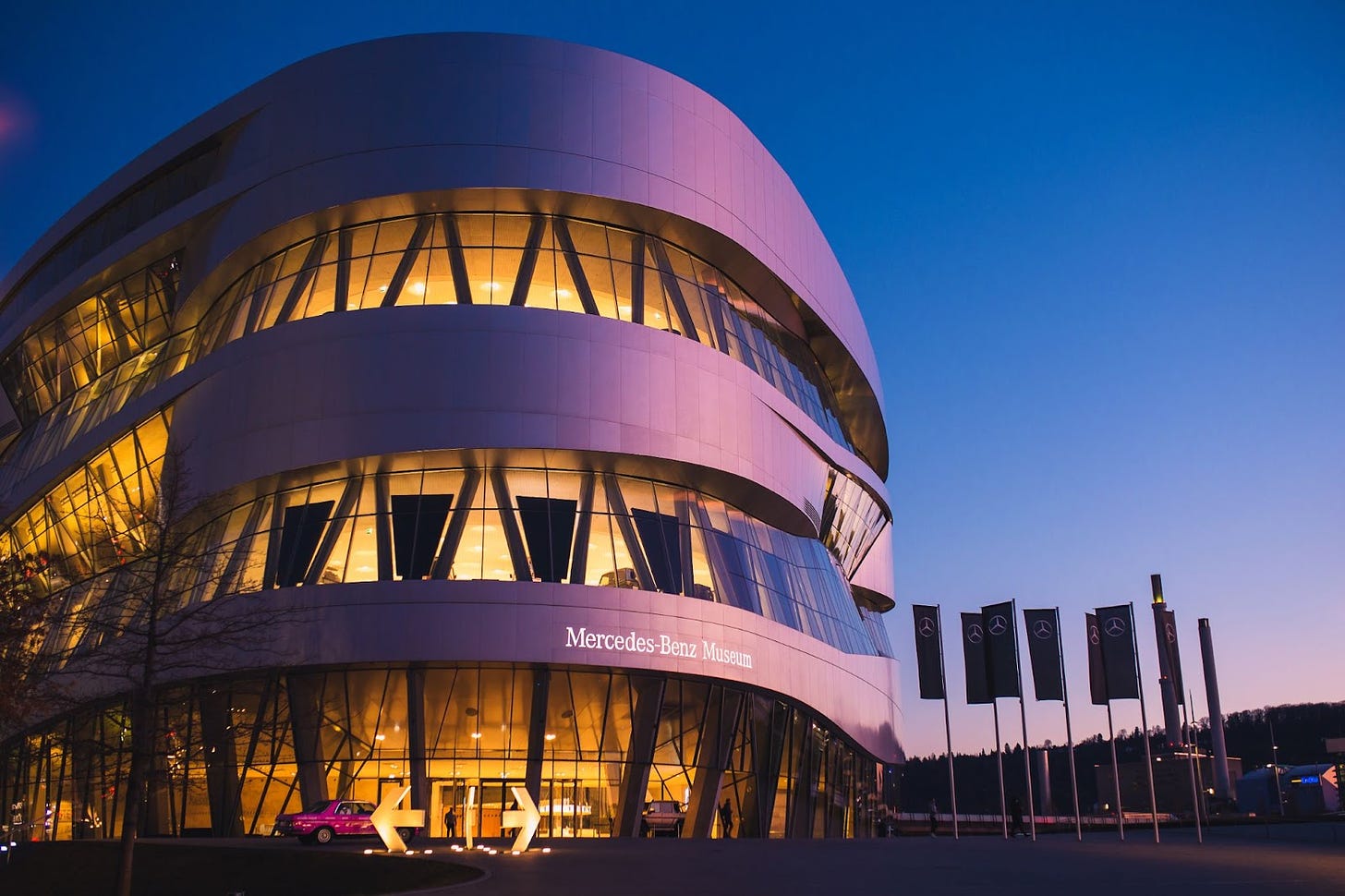
Information on opening hours and ticket prices can be found here:
The Museum is closed on Mondays.
A virtual Tour can be taken here:
Porsche Museum

Established in Stuttgart in 1931, the current Porsche museum site was opened in 2009.
The original museum was further down the road, near the factory, but was too small as it could only hold around 20 exhibits.

The new space is able to have 80 different cars and exhibits over three levels, which include a restaurant, a cafe and a visitor shop.
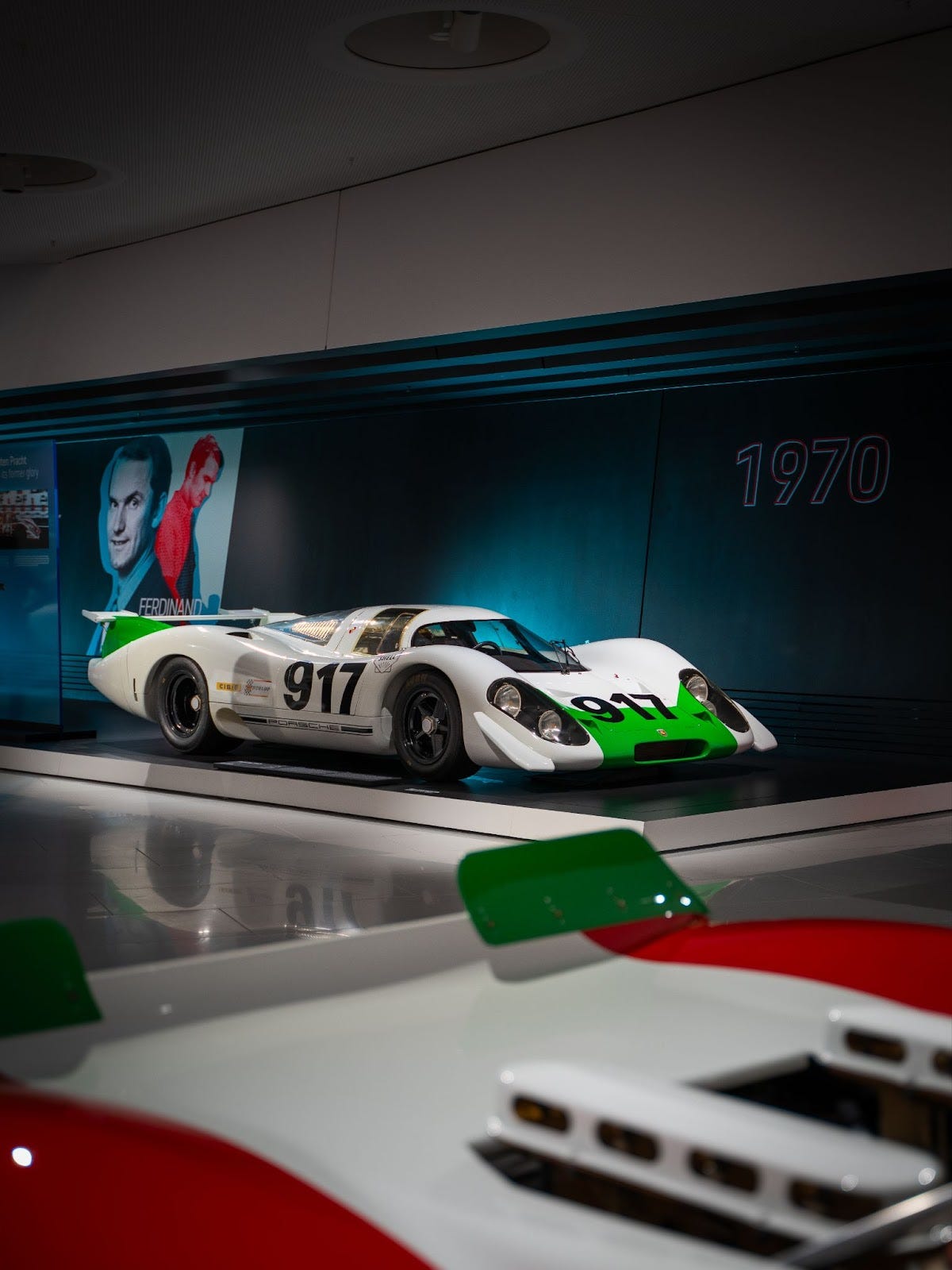
The company has around 300 different restored cars to choose from and rotate the displays frequently.

The new museum cost over 100 million Euros to build.

On display are a selection of trophies from the over 30,000 victories that the company has had with its cars.

In 1996, the one millionth Porsche 911 sports car rolled off of the production line and was given to the state of Baden-Württemberg to be used as a police car. It is now on display in the museum.

In 2023, the Porsche Sportswagon celebrated its 75th Anniversary with a number of models on display in the museum.

Relevant Travel Information:
Information on opening hours and ticket prices can be found here
The Museum is closed on Mondays.
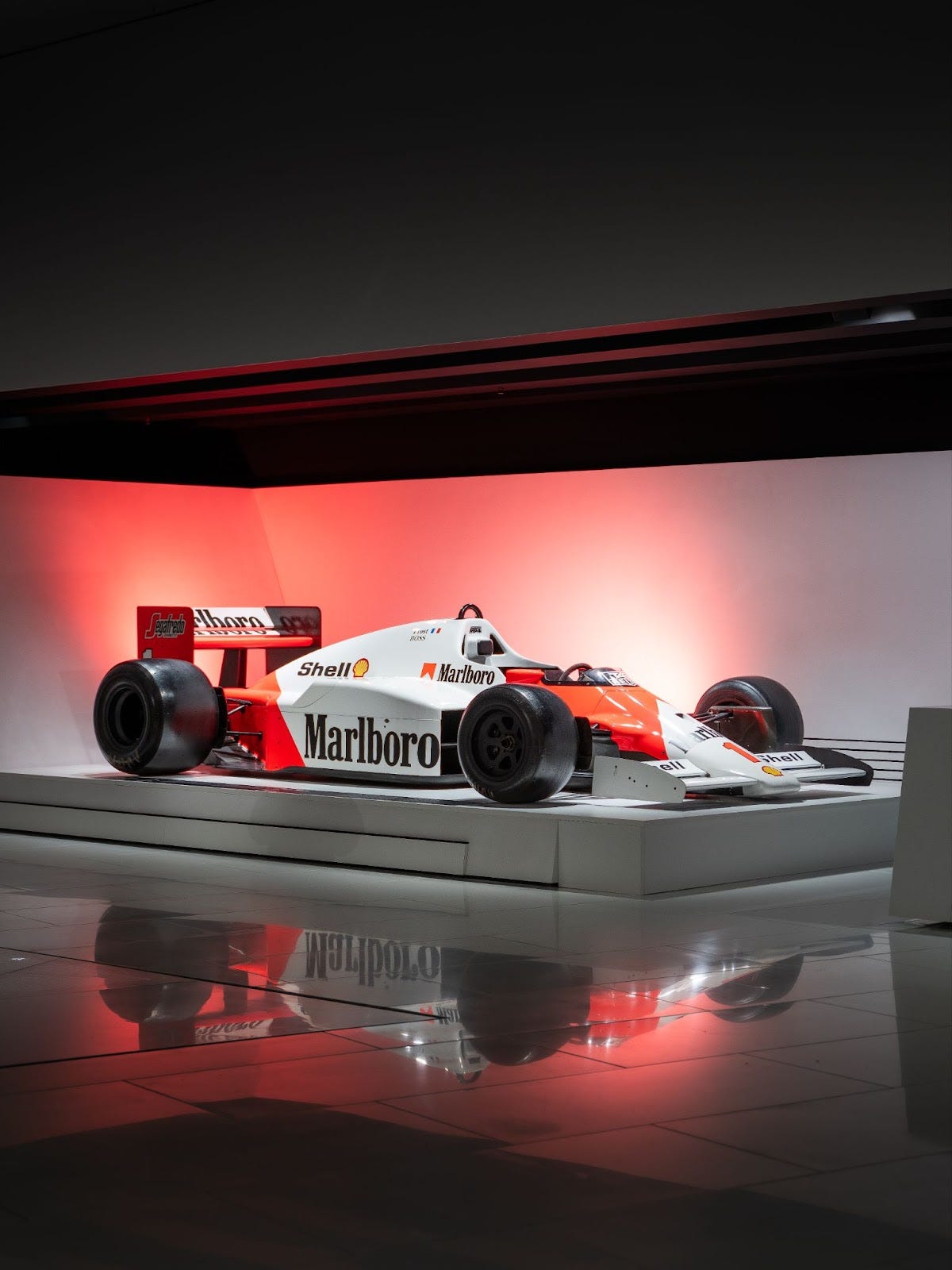
A virtual Tour of the Museum can be found here:
Although there are, of course, hundreds of places to eat in any city you visit (Europe being no exception), on our last evening we went to the Abaccos Steakhouse on the outskirts of Stuttgart.

They have a huge range of cuts to choose from in small, medium and large portions from premium graziers worldwide.
The concept is that the steak comes semi-cook and you finish it off at your table to your desired cooking preference; rare, medium, well done, are all possible,

You cut slices and then cook them further on the top stone that is heated to 700 degrees! If you require the stone to be refreshed with another hot one (once it cools down), then they come along and do that for you too.
The service was excellent, the food fantastic and it was one of the best meals we had while we were away.
Located all over Germany, Abbacco’s Steakhouse is a great restaurant to try if you like a concept that’s a bit different. It’s not cheap at around €60/pp for food and drink.
LAST CHANCE ON LIFETIME OFFER
From March 1st, there will be exclusive parts of my newsletter available to paid subscribers only. Until then, you can get a discount of 20% for an Annual Subscription or 10% on a Monthly one. Use the links below to upgrade to paid.
If you would like the Annual option, please click this link:
https://travelingthroughhistory.substack.com/Annual20
For the Monthly option use this link:

Michelle is a speaker, author, content marketer, historian and mother of 3 boys.
After 25 years in business and as the ‘Content Marketing Queen’ for the past 12 years, she has helped countless small businesses understand and develop their content strategies and focus on a customer first approach.
Savvy Travel Historian is her passion project, and her weekly newsletter is available on Substack, Paragraph and Mirror. The latter two allows you to collect each Issue as an NFT.
Michelle is co-host of the Business on the Bloc podcast, a weekly show which talks about the digital media revolution and how it applies to B2B marketing, sales and operations. The show is recorded live every Wednesday at 4pm EST/ 9pm UTC on LinkedIn, YouTube & Bolt+.
You can follow Michelle in these places:
Savvy Travel Historian Instagram

